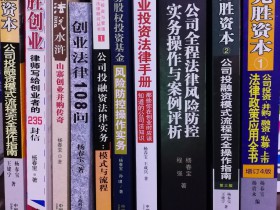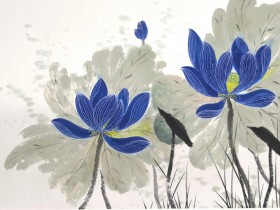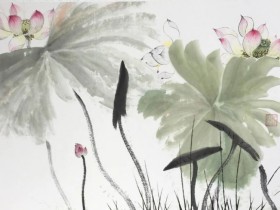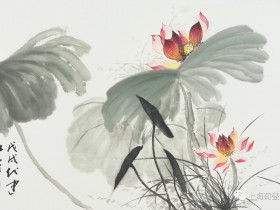French clothing manufacturer manages to settle several copyright disputes through mutually beneficial conciliatory agreements
SHANGHAI: Documentaries typically depict the savagery of the animal world through footage of opposing species clashing with one another for supremacy, but the most recent battle on Asian soil has been decidedly reptilian.
Although some consumers debate whether those famous shirts sport an alligator or crocodile logo, there is no question after a five-year court struggle that the cold-blooded creature is the exclusive trademark of French La Chemise Lacoste in China.
“This is the most important thing we have fought for,” says Paul Ranjard, Lacoste’s acting lawyer and chairman of the European Chamber’s Intellectual Property Rights (IPR) Working Group.
Lacoste has reached an agreement with Zhejiang Crocodile Garment Co Ltd, which is based in East China’s Zhejiang Province, that recognizes the European manufacturer’s exclusive rights to the crocodilian trademark in China. The Chinese company will stop using its similar logo within three years.
Lacoste followed the deal by announcing it would withdraw its against Zhejiang Crocodile.
Hu Qiyang, chairman of Zhejiang Crocodile, said at a November 17 press conference in Beijing that he understood the importance of respecting Lacoste’s exclusive rights to the trademark.
He added that he was determined to create his own brand, and hoped domestic enterprises would do the same by actively protecting their own identities, according to reports in the Beijing-based Legal Daily.
Lacoste also expressed understanding. Chairman Michel Lacoste says he appreciates the difficulties enterprises face in developing their own brands, which is why the company agreed to grant Zhejiang Crocodile a three-year transition period.
That time frame is more than adequate, says Lacoste’s Chinese lawyer Huang Hui.
“They (zhejiang Crocodile) said they didn’t need that much time,” Huang says.
Ranjard adds that the deal also requires Zhejiang Crocodile to seek approval fromLacoste before deciding on a new brand.
It was Lacoste’s second reconciliation following its agreement with Hong Kong based Crocodile Garments Ltd, another big competitor in the mainland market.
The two agreed on November 23, 2003 that Crocodile Garments recognizes Lacoste’s exclusive rights to the reptile trademark on the mainland. The Hong Kong manufacturer will begin using a very different crocodilian logo on its products from March 31, 2006.
A third dispute with Singapore-based Crocodile International Private Ltd is now the only unresolved issue. The companies have been in court for over five years.
In March 2004 a Shanghai court ordered Lacoste to stop infringing on the Singaporean company’s logo, which the French manufacturer rejected. It shifted its focus to distributors, and filed a lawsuit against two department stores that were selling the Singaporean company’s products in Central China’s Hunan Province. It won both cases.
Lacoste registered its trademark in China in 1980, but the company did not prioritize the market until 1990. Its solid reputation and marketable reptilian logo soon became popular with Chinese clothing companies. Over the past two decades, copycat crocodiles have sprung up all over the mainland.
Singapore Crocodile International opened its first wholly owned enterprise in Shanghai in 1994, and later set up two factories in Shenyang, in Northeast China’s Liaoning Province, and in Suzhou, in East China’s Jiangsu Province.
It now has more than 1,000 specialty shops and its products have brought in approximately 2 billion yuan (U$246 million) in sales.
Hong Kong-based Crocodile Garments, which was founded by Chen Jun, brother of Crocodile International’s Chen Xianjin, also fared well. It built a large production base in South China’s Guangdong Province in 1987, and started selling crocodile shirts on the mainland in 1990.
Crocodile Garment’s sales network now covers 90 cities, with over 900 specialty shops and annual sales of more than 1 billion yuan (US$123 million).
Lacoste built its production base in 1995 and launched its first specialty shop in Shanghai. It now runs only 200 specialty shops and department store counters, but China is only the company’s 10th largest market in the world.
Zhejiang Crocodile is the largest of the domestic crocodiles, with more than 260 specialty shops and store counters by 2003. Its sales in Beijing surpassed the other three crocodiles.
Zhou Baochang, general manager of Zhejiang Crocodile, refuses to comment on the Lacoste deal, but says it was based on mutual understanding. He is also unwilling to reveal sales figures, for fear of hurting the company’s rivals.
Lacoste filed a suit against Zhejiang Crocodile for trademark infringement in the Beijing Higher People’s Court on May 11. 2000. The case opened two years later.
“We wanted to let our competitors know through the lawsuit that our trademark is unique,” says Ranjard.
Zheng Zhangjun, a partner with Beijing Fengshi Law Firm, says the result was positive.
“It is favourable to Zhejiang Crocodile,” he says.
“Reconciliation is a good way forward for China’s growing enterprises.”
He says that trademarks are vital to business, and Chinese enterprises need transitional periods to establish their own brands.
Yang Chunbao, a senior lawyer from Haworth & Lexon Shanghai, says Chinese firms should not rely too much on famous foreign brands.
“Imitating a famous brand will bring immediate profits, but over the long run, you are simply promoting other brands,” he says.
“Ultimately, you still have to re-establish your own brand systems.”
This point may have been lost on many of the smaller crocodile companies.
Lacoste’s lawyer Huang syas the company is still fighting against many enterprises other than the Singaporean manufacturer.
Origin of the species
Lacoste’s trademark came from company founder Rene Lacoste. The famous US tennis player was nicknamed “Crocodile” because of a bet he made with his captain, who promised him a crocodile skin suitcase if he won a match that was important for the team.
The nickname stuck, caught on with the American public, and highlighted Lacoste’s tenacity on the tennis courts.
Lacoste’s friend Robert George drew a crocodile that was later embroidered on a blazer the star wore on the court. The animal was on the left side, with its mouth facing to the right.
Lacoste established La Chemise Lacoste in 1933, and began mass-producing the shirts. The logo was first registered in France, but later spread to 192 countries. The design was later put on a number of other commodities, such as perfume and shoes.
(本文转载自China Daily(《中国日报》)之China Business Weekly(商业周刊)2005年11月25日IPR Special(知识产权专刊))




